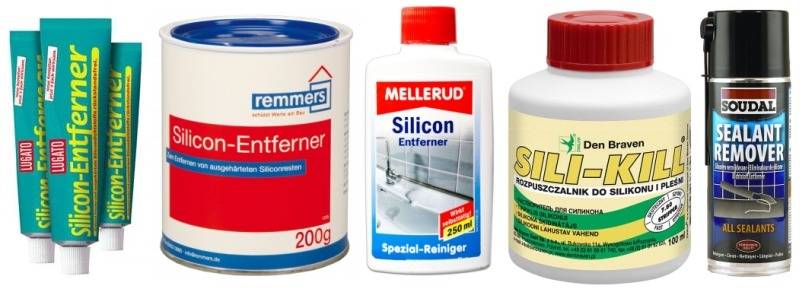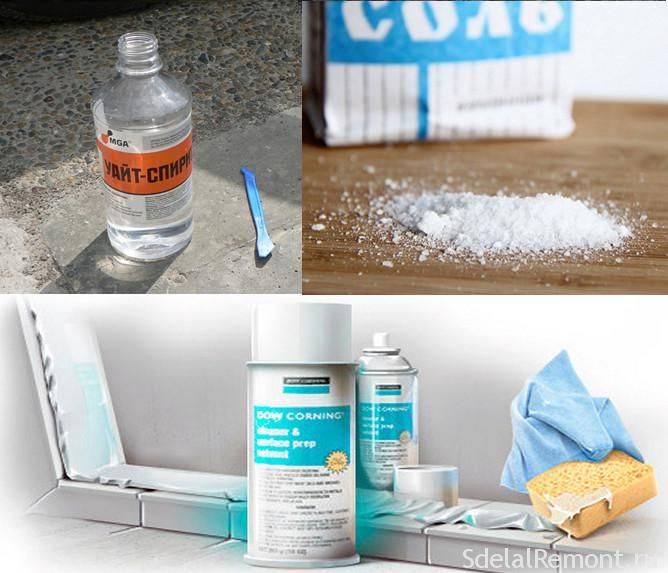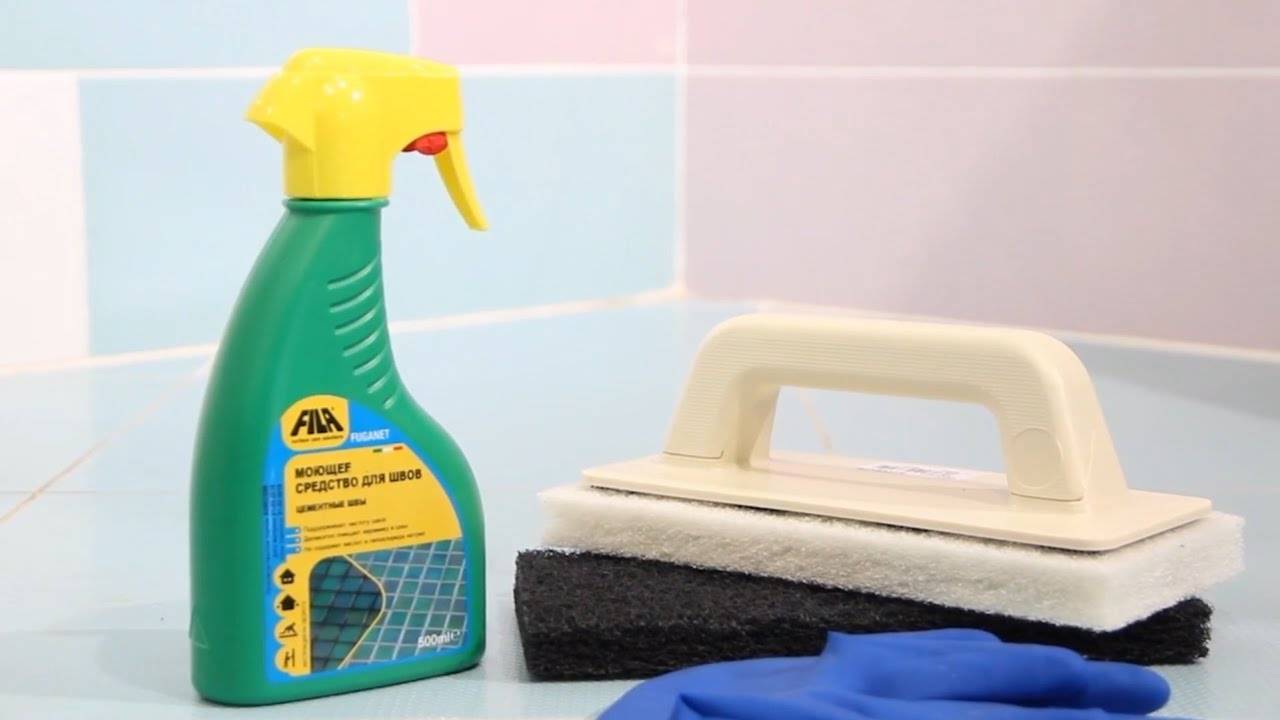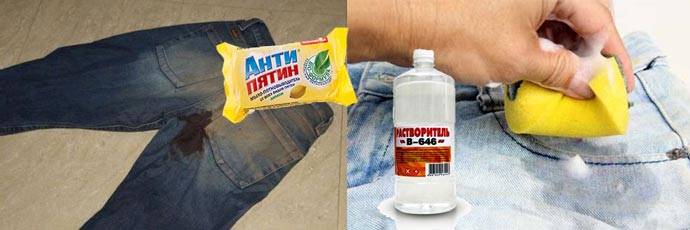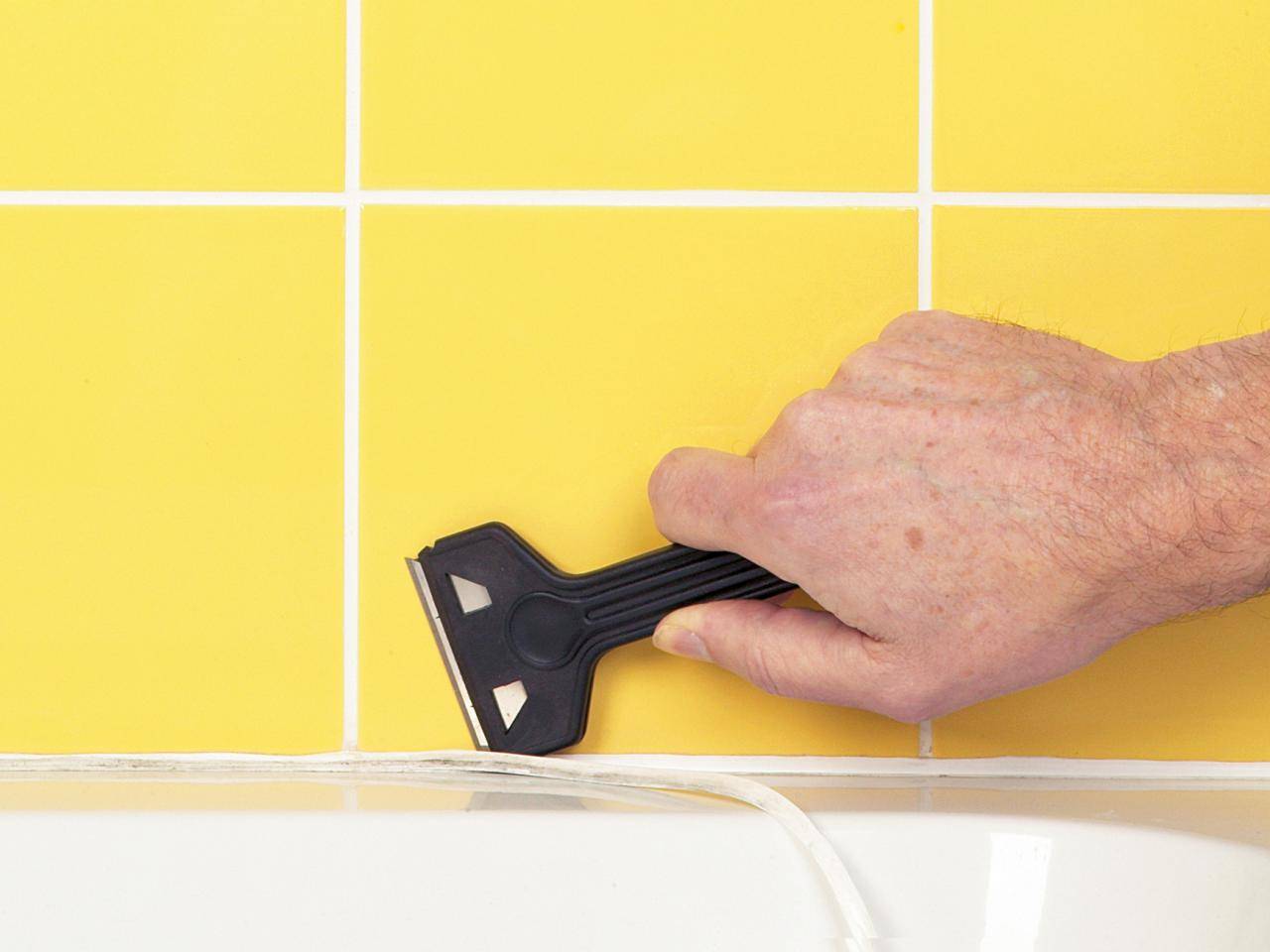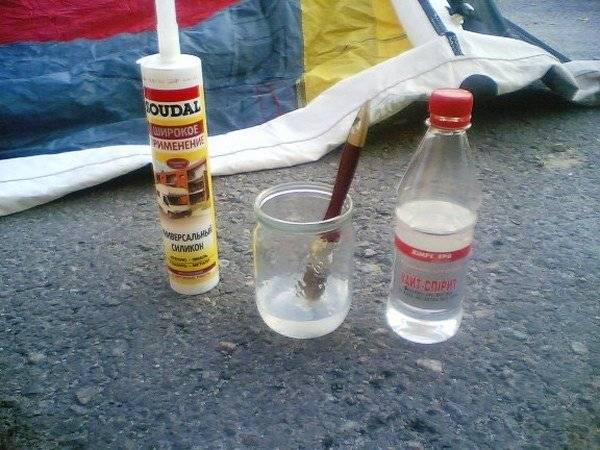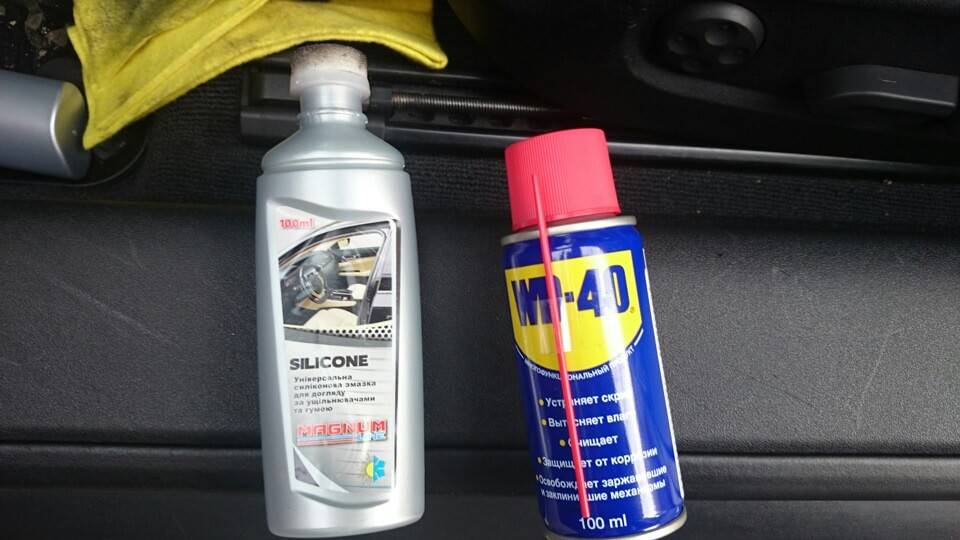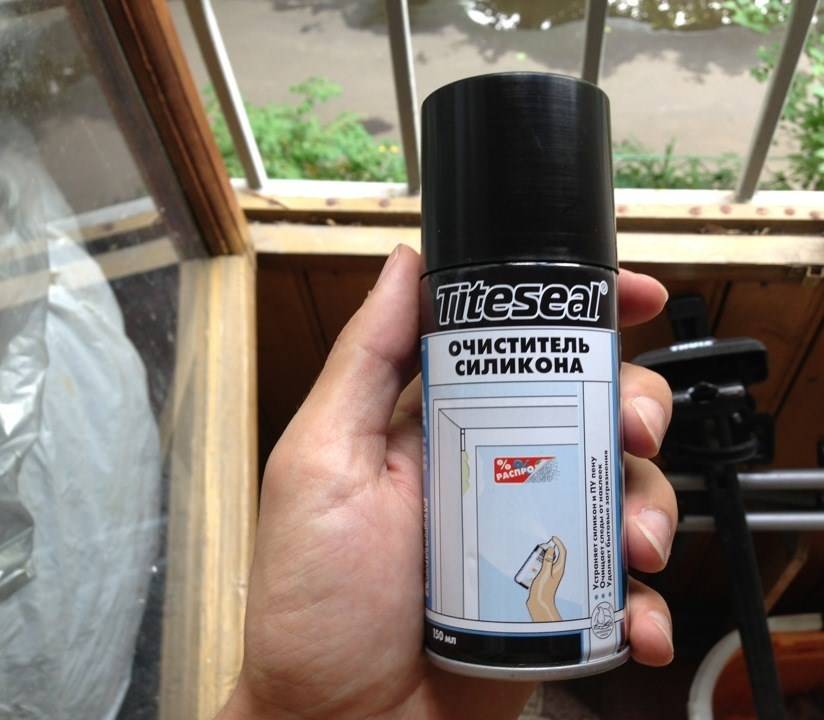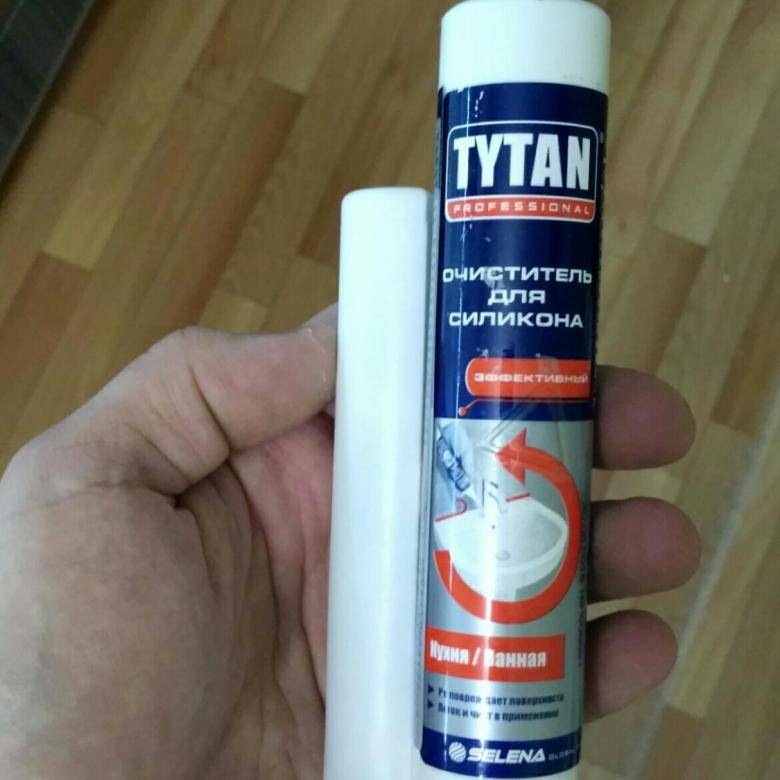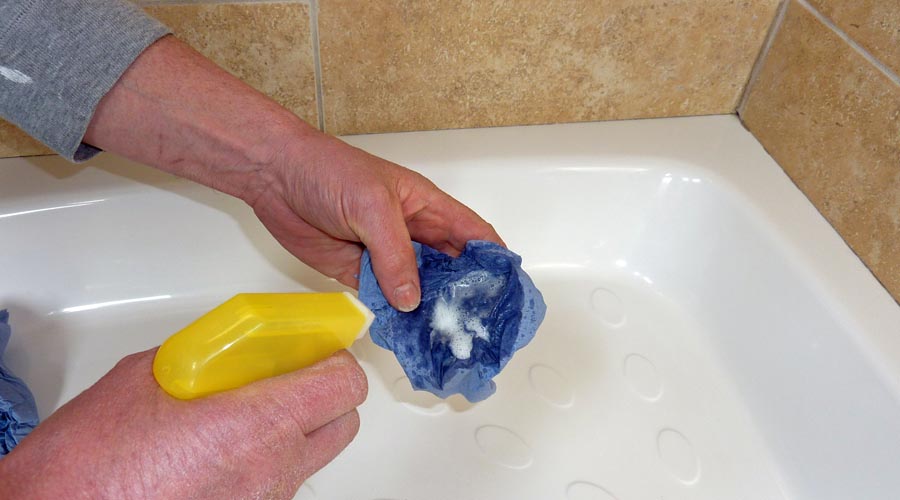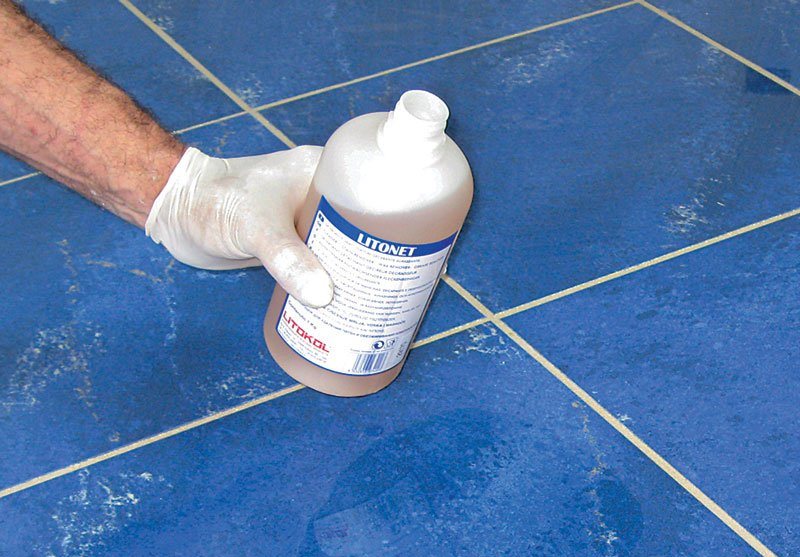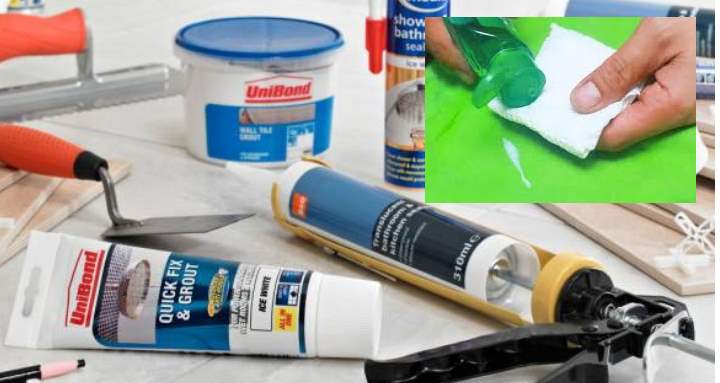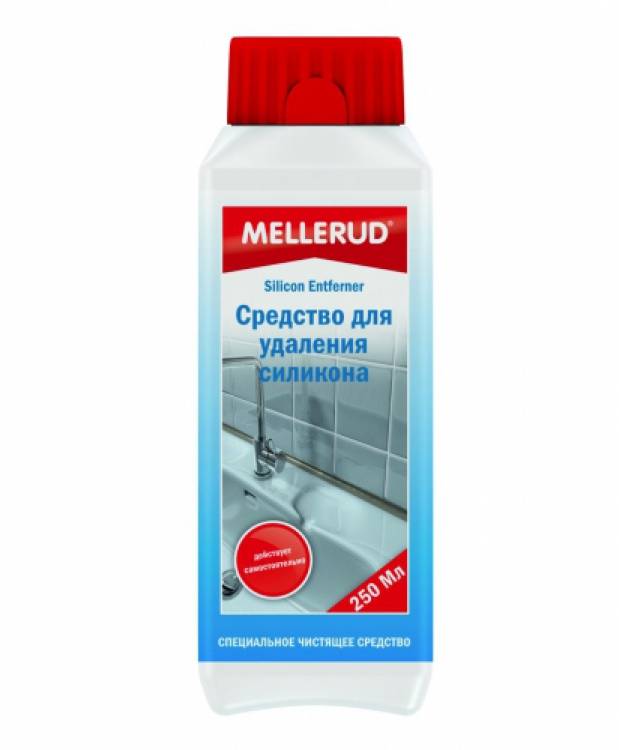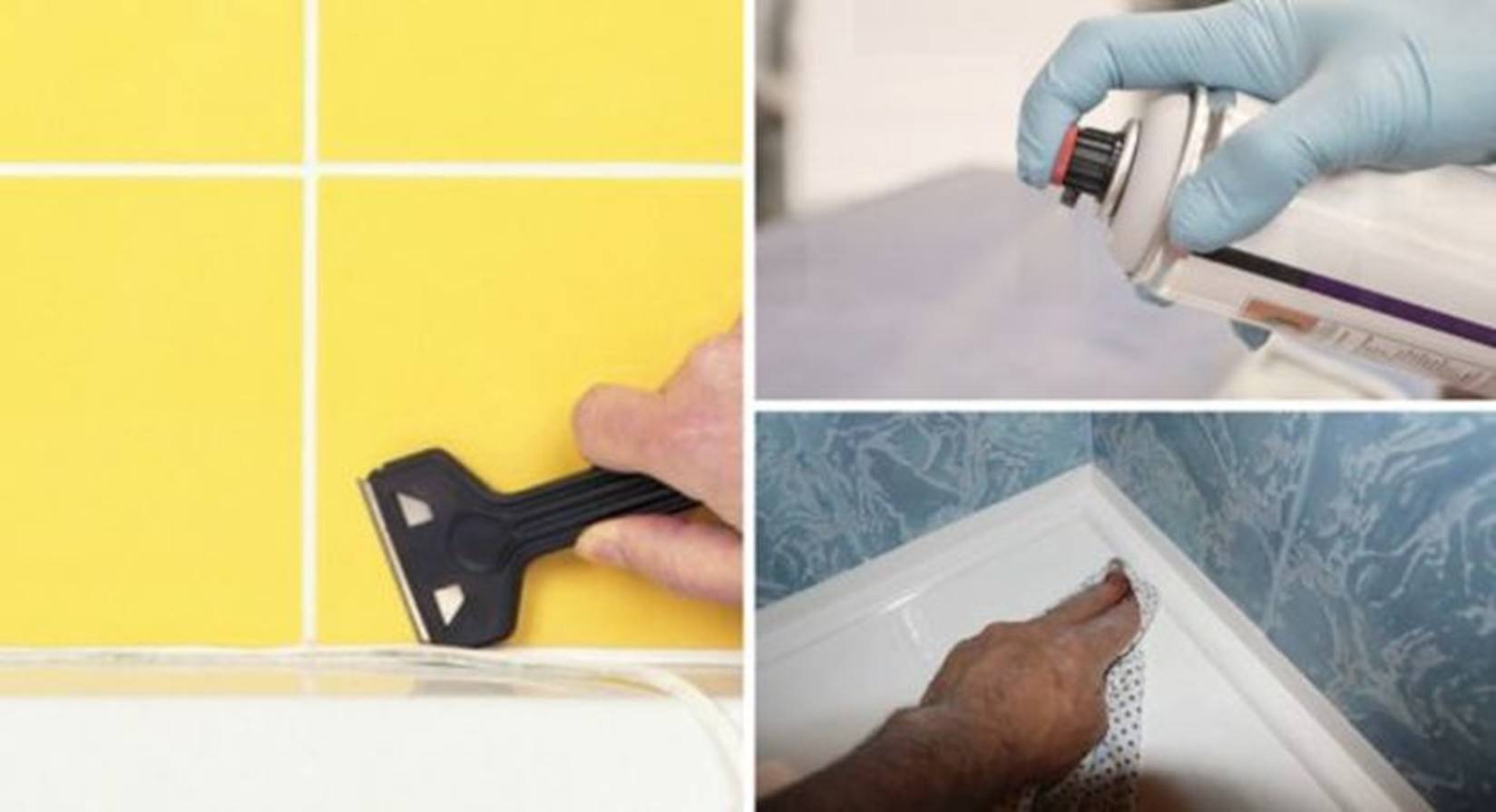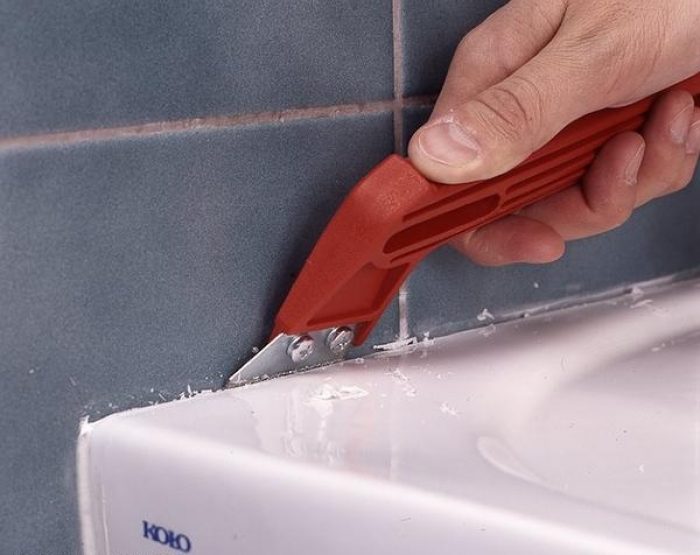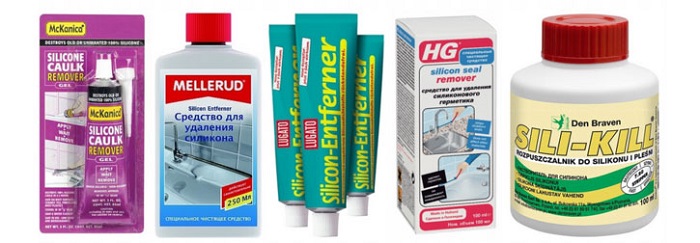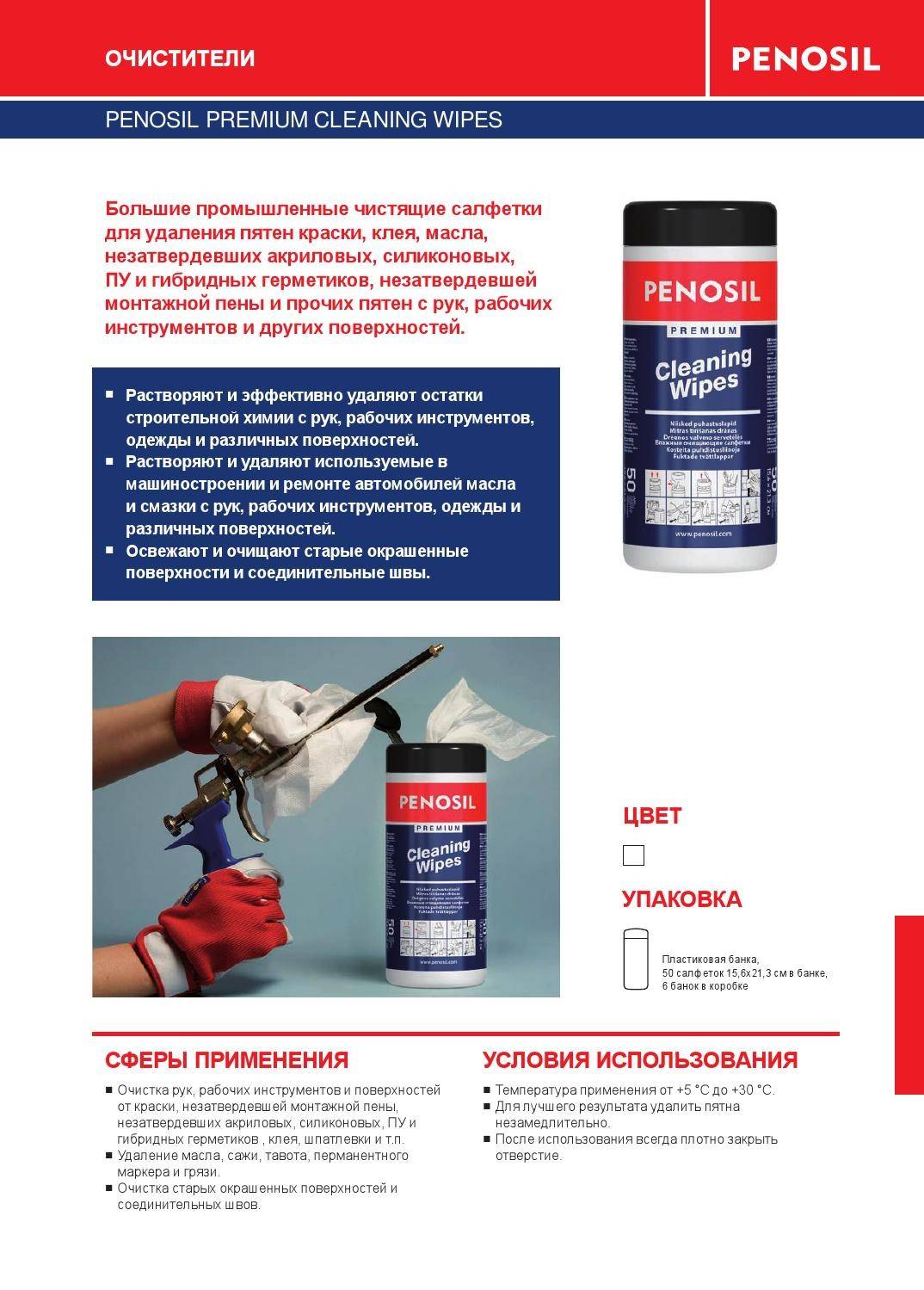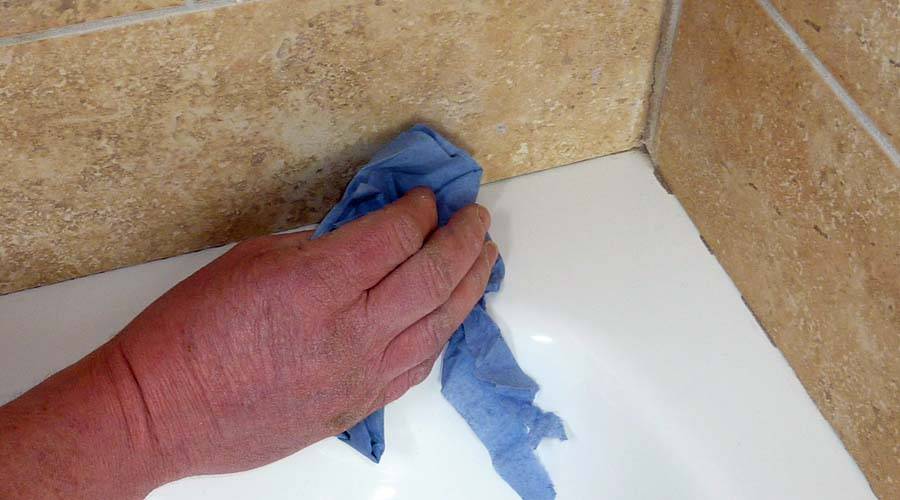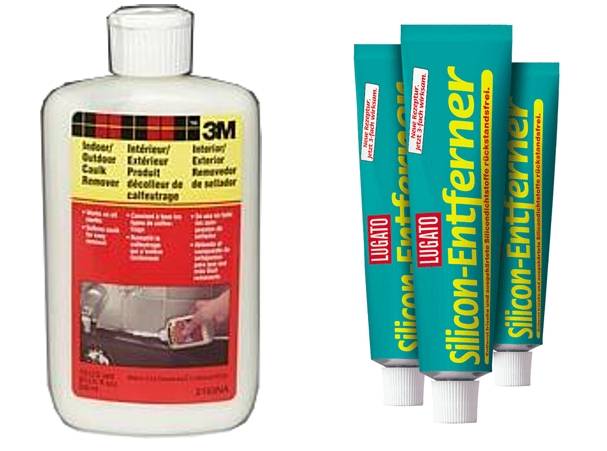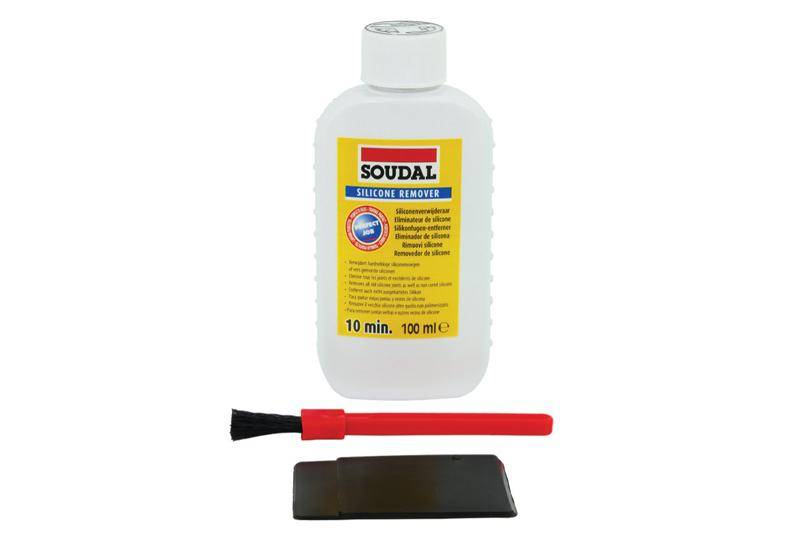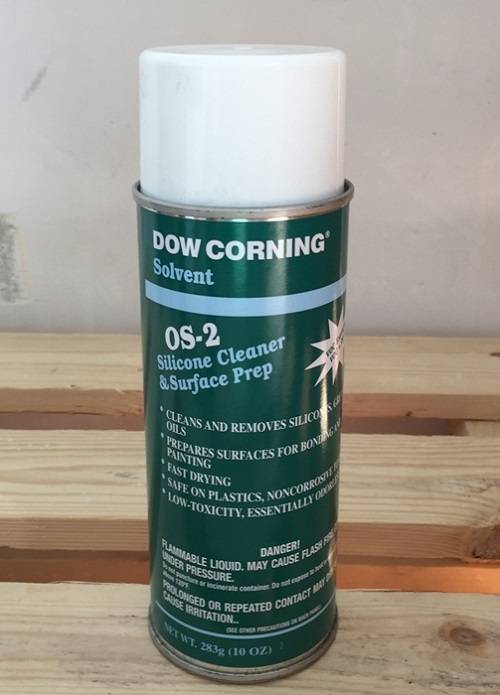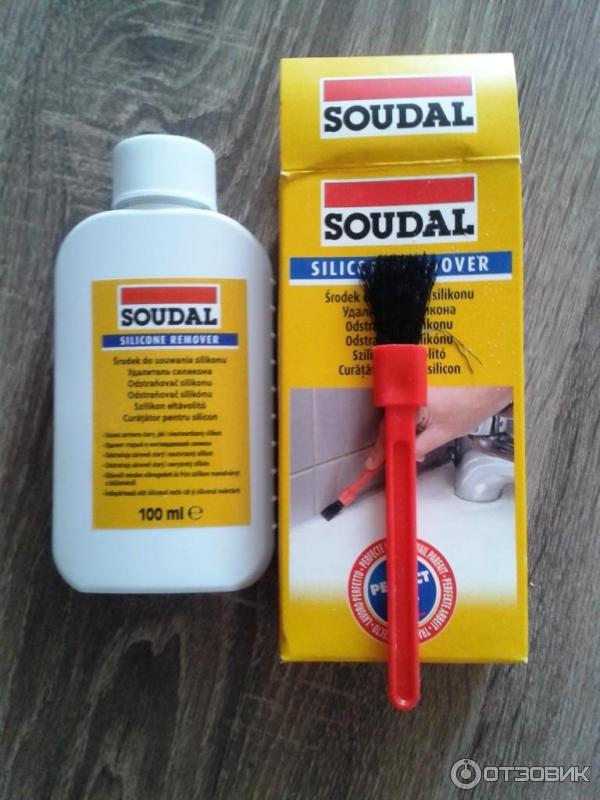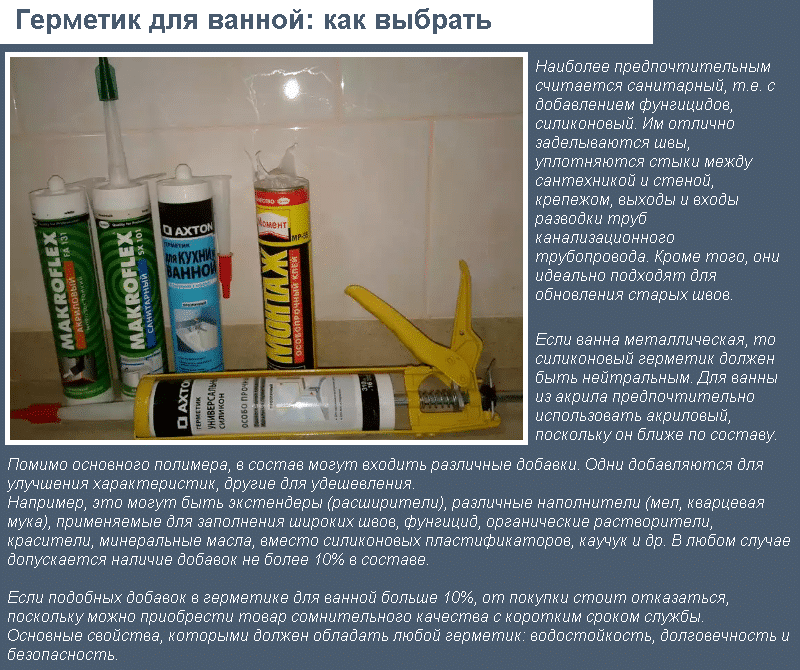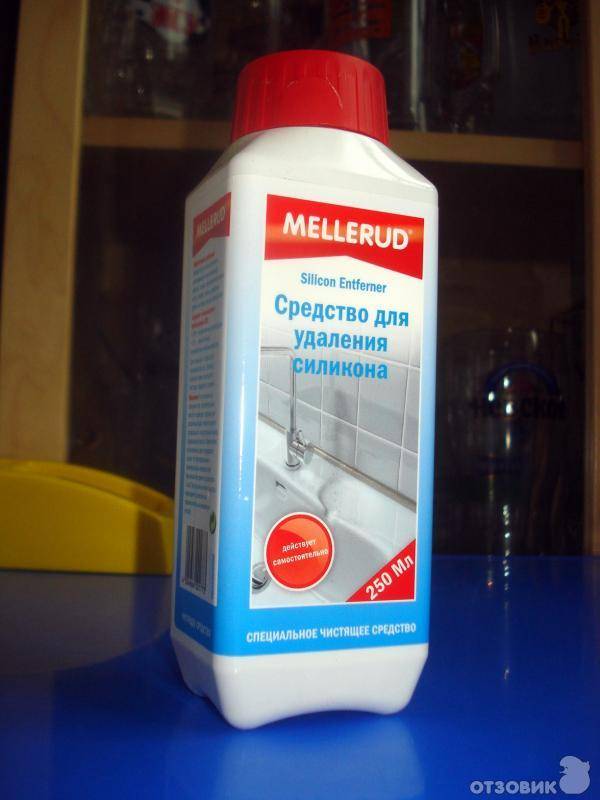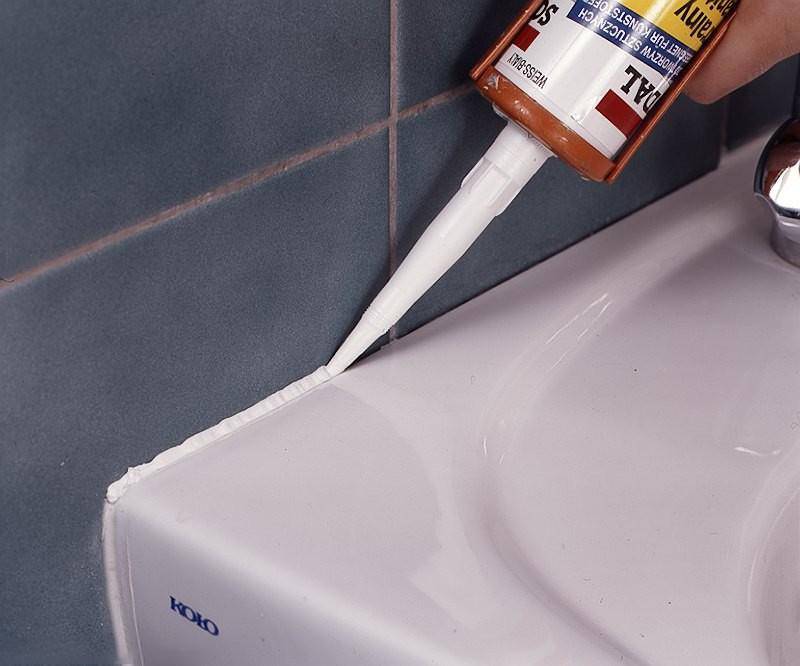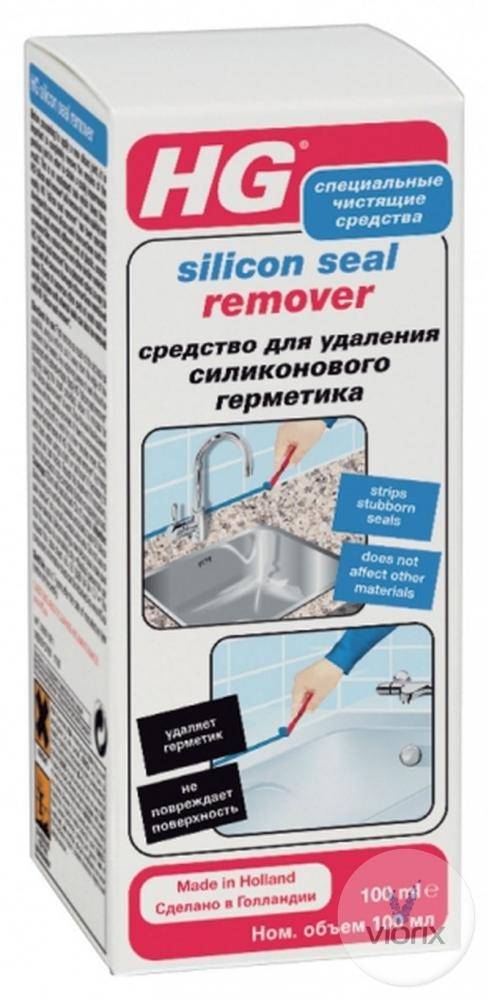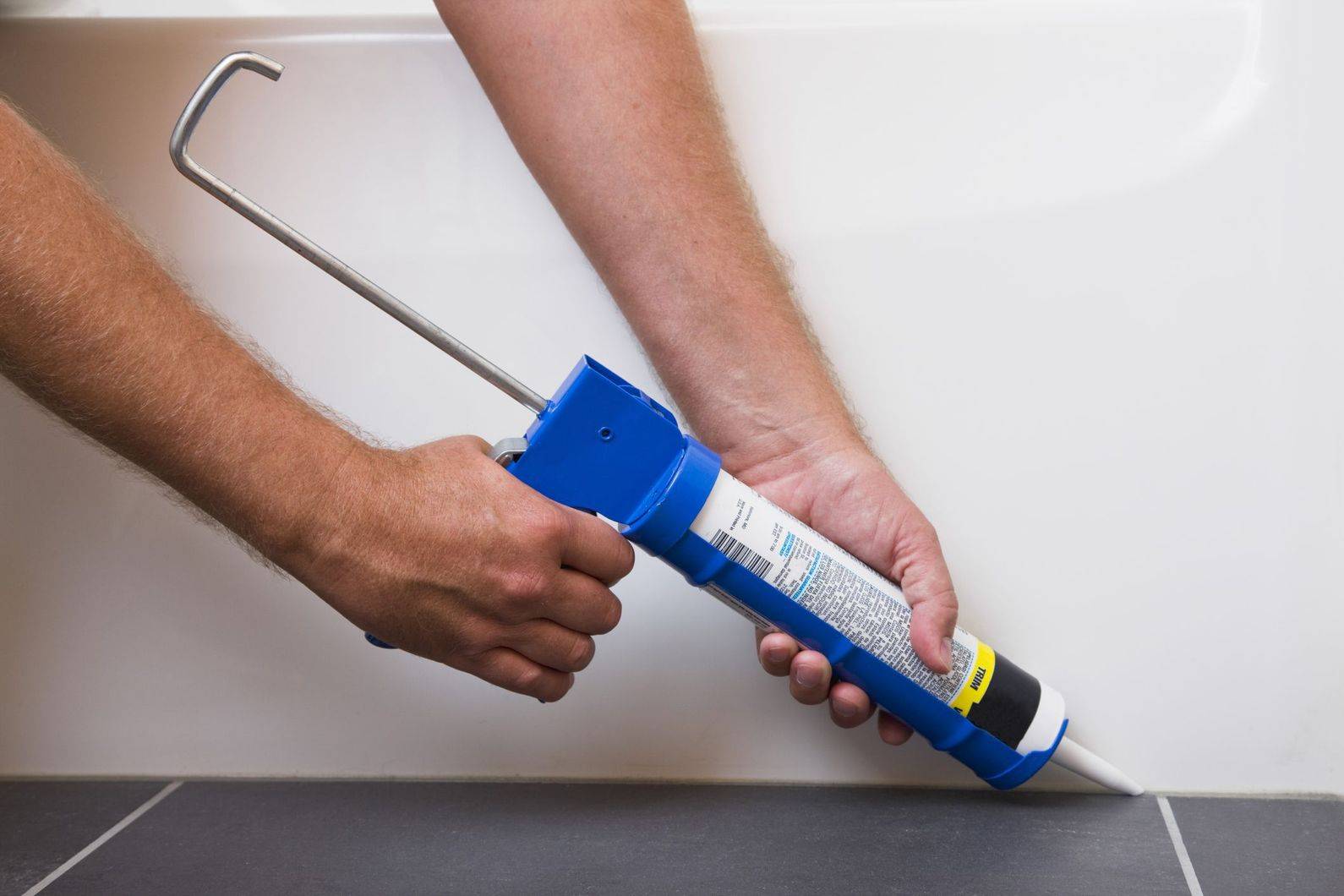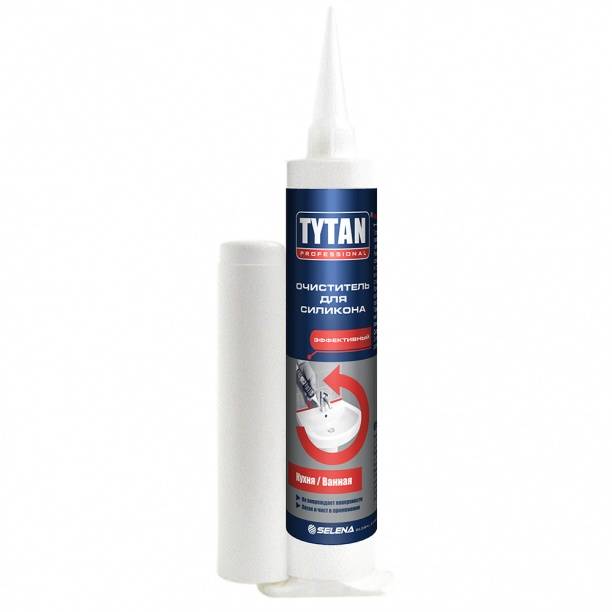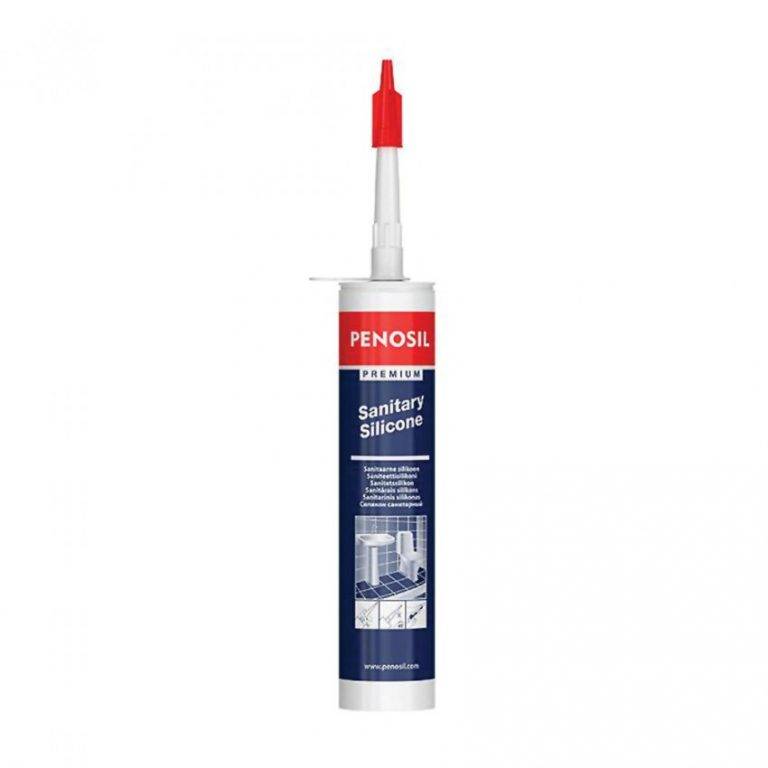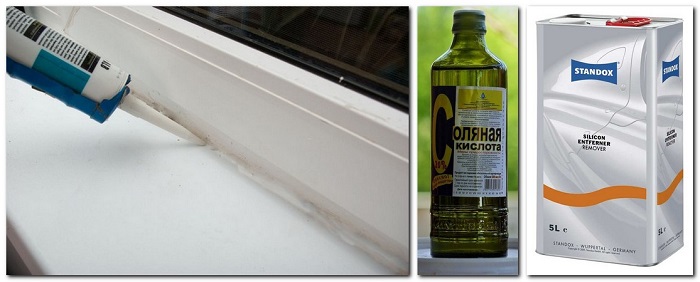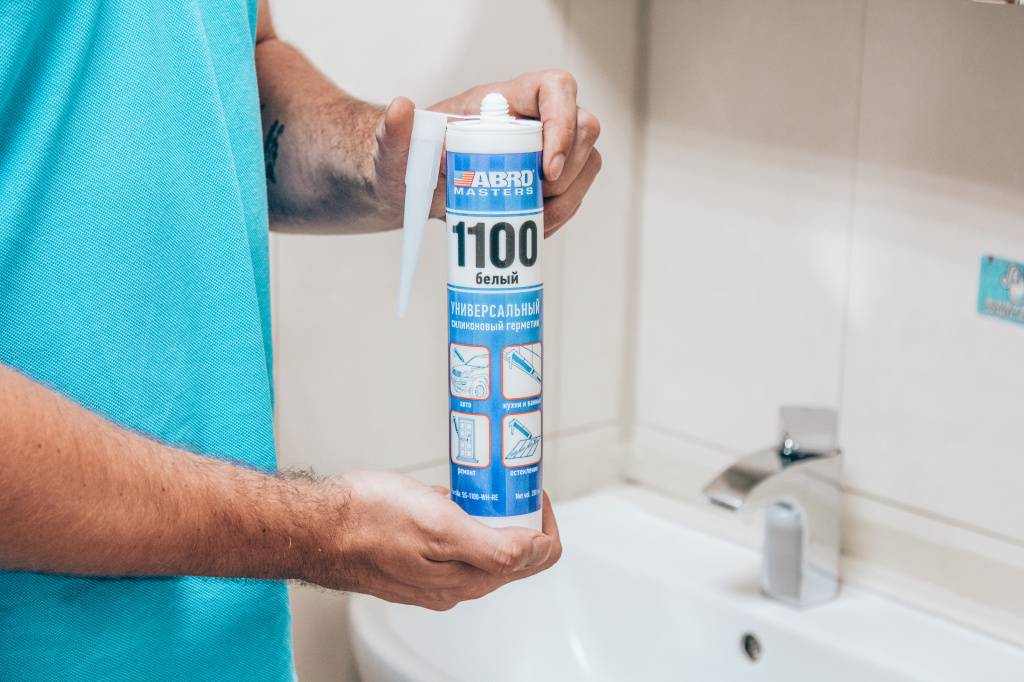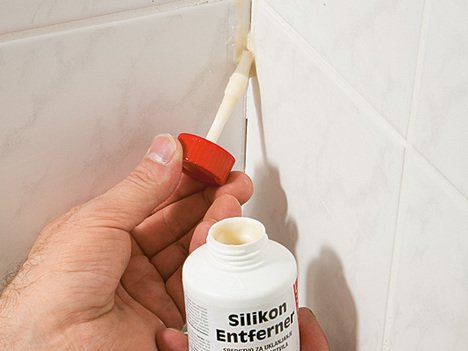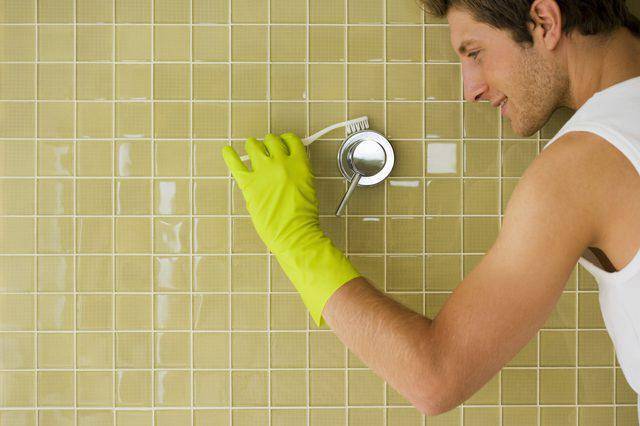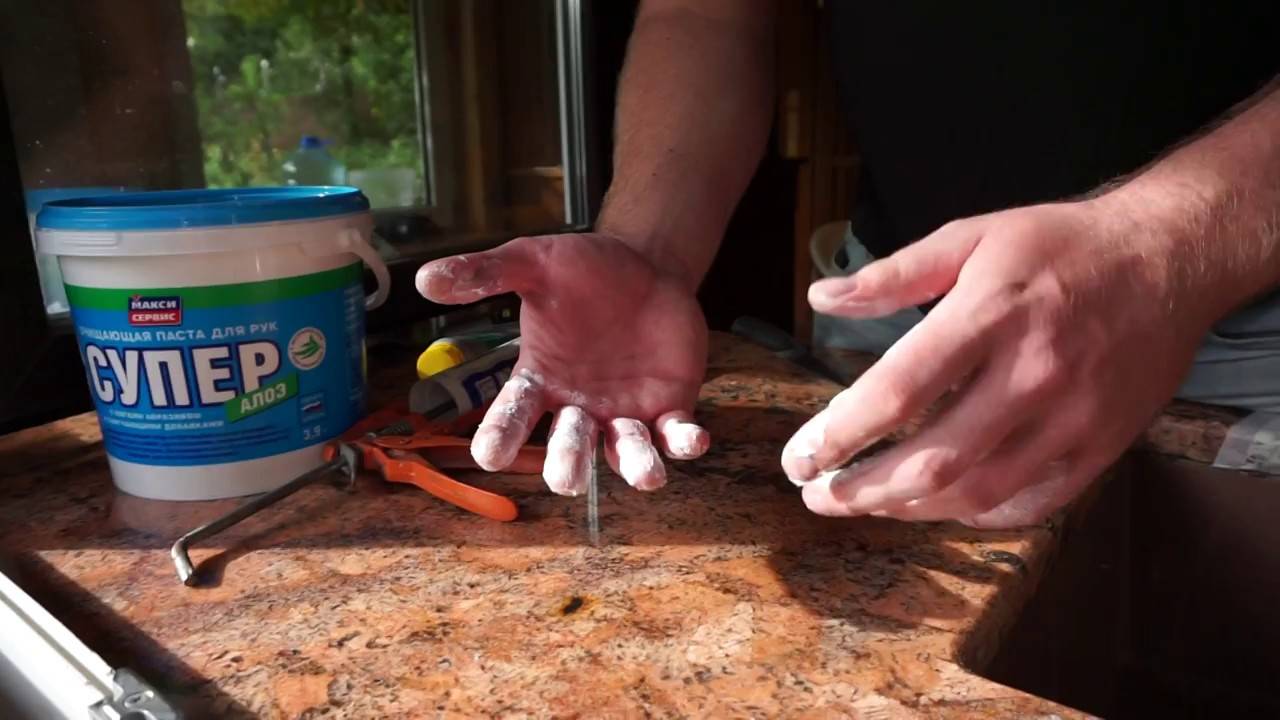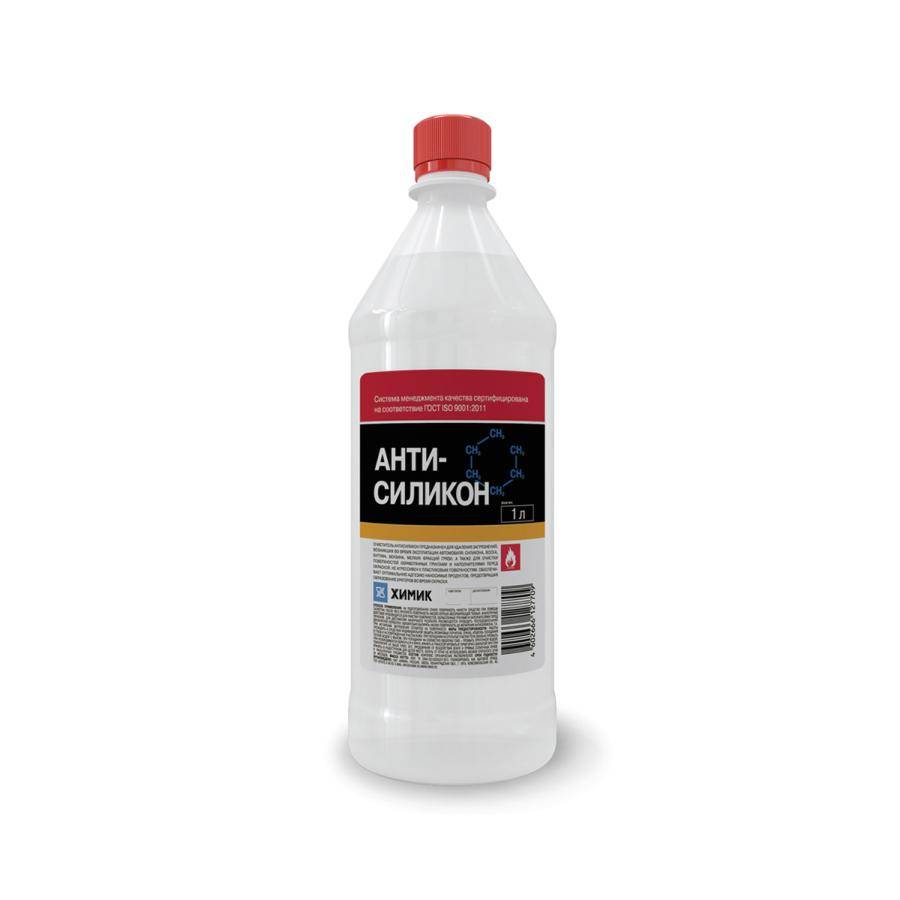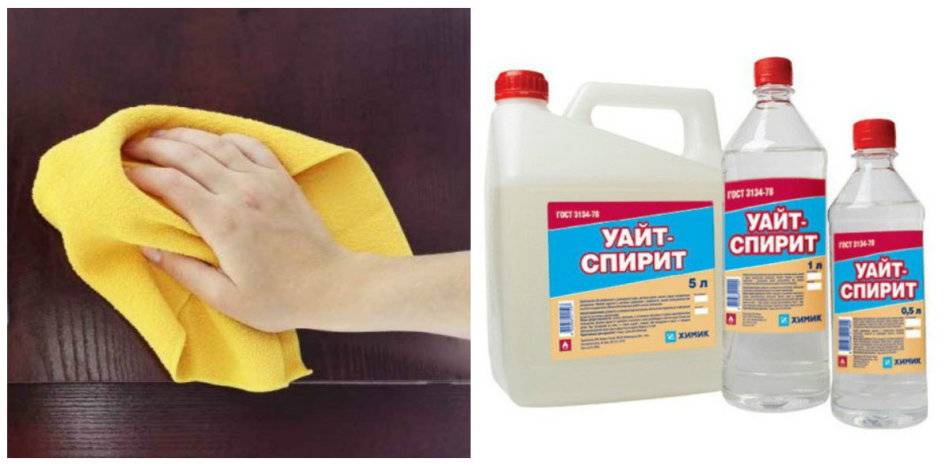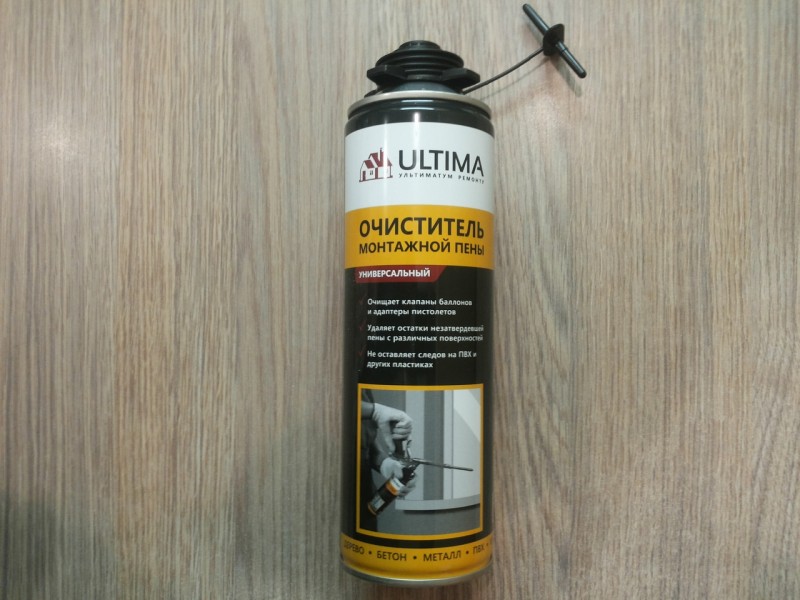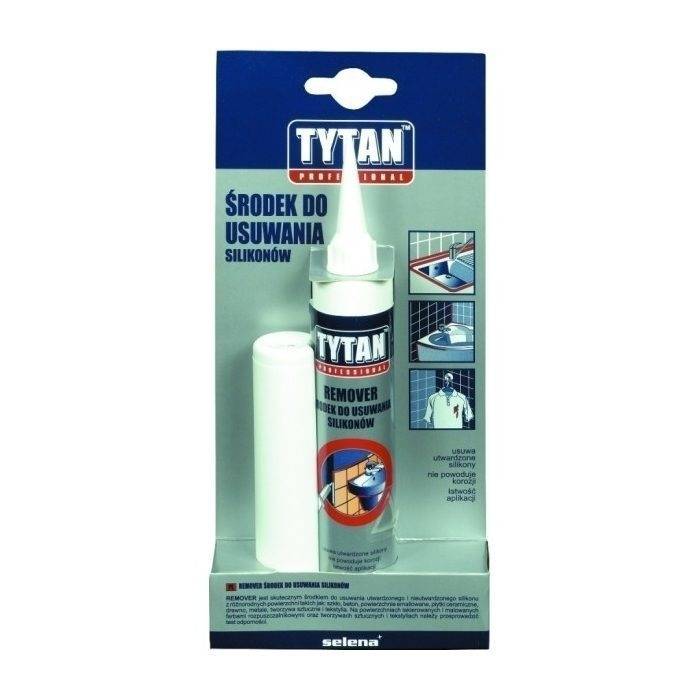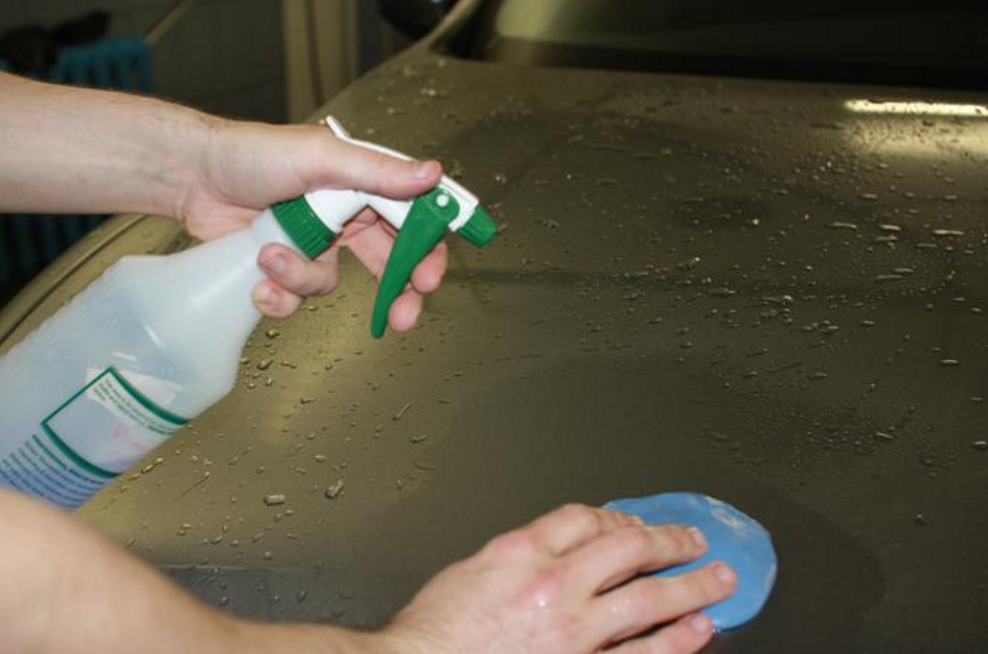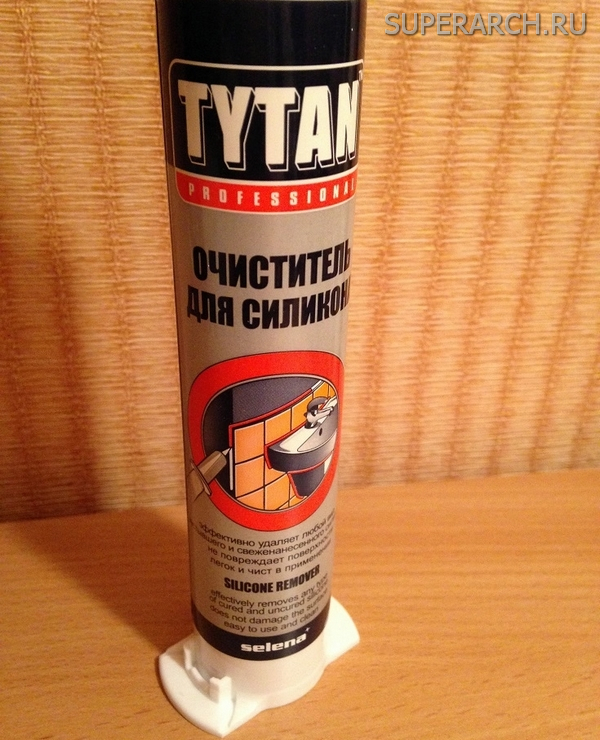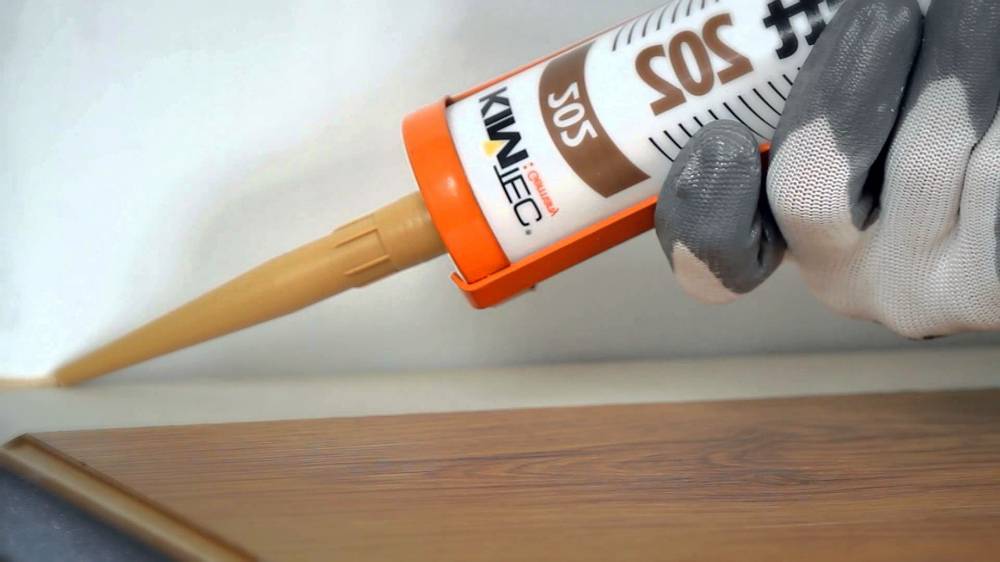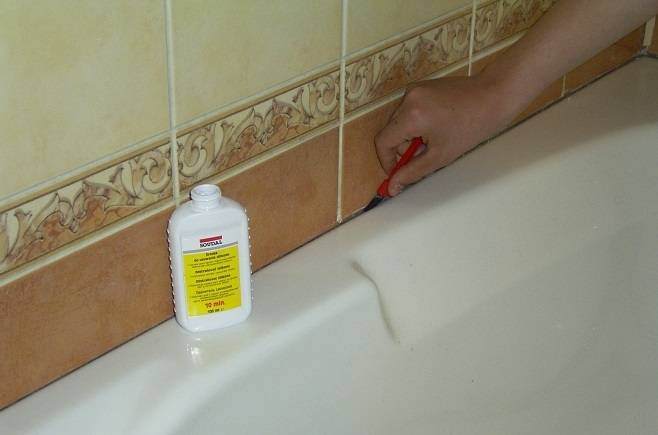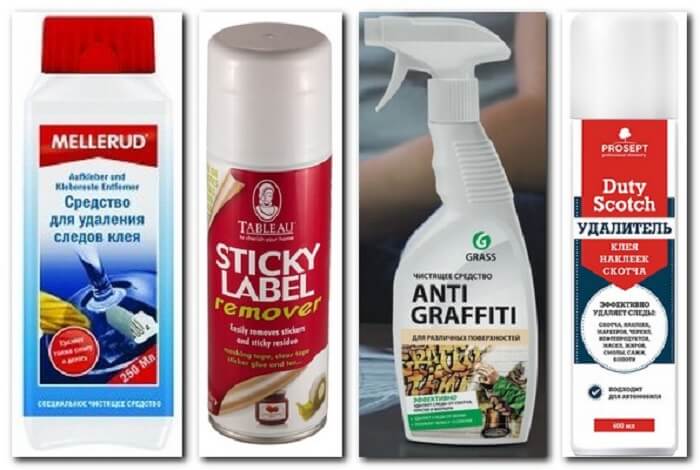What is silicone sealant?
Let's start with the definition of what it is, what properties it has and, of course, where it is most often found. So, if you need to glue something or seal the seams, for example, between the bathroom and the tile (of course, the distance should be small), then this material will perfectly cope with the tasks. It is able to provide excellent bonding, even when it comes to absolutely smooth glossy surfaces.
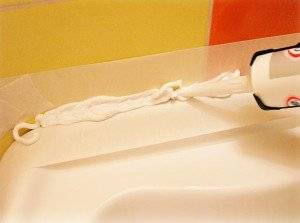
In addition, it is worth noting that silicone is absolutely not afraid of moisture and will make the connection not only reliable, but also hermetically sealed. Another of its properties is excellent elasticity, which makes it possible to work even with moving parts. Therefore, this composite material, created on the basis of polymers, is used both in construction and for domestic purposes. However, when working with it, it should be borne in mind that it is easy to remove it with plain warm water until it hardens, but what to do if the silicone has already hardened will be discussed below.
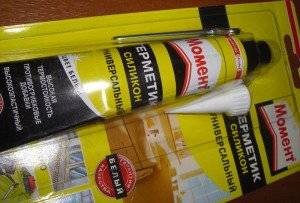
How to clean sealant from different surfaces
Silicone sealant has earned the fame of the most "harmful" among home craftsmen, since it is able to penetrate even the smallest cracks, from which it is almost impossible to remove it after hardening. Therefore, if the sealant gets on non-working surfaces, you should immediately begin to neutralize it, because with every minute the costs and time to scrape off the affected area increase exponentially. At the same time, some materials, in principle, do not allow you to get rid of silicone.
 Now on the market you can find all sorts of tools that exactly help soften and wash the sealant.
Now on the market you can find all sorts of tools that exactly help soften and wash the sealant.
From glass
Since the physical structure of the glass prevents deep adhesion, to remove the sealant from its surface, it is enough to cut the base layer with a knife with a thin blade, and then remove the residual film with white spirit or a regular stationery eraser. Particularly stubborn layers can be removed using strong heat or in a more radical way, for example, with a drill with a felt nozzle.
 Every precaution should be taken to avoid scratching the glass before removing the remaining silicone sealant by machining.
Every precaution should be taken to avoid scratching the glass before removing the remaining silicone sealant by machining.
From plastic
Silicone is much easier to remove from this surface, since the plastic is also slightly susceptible to adhesion (if no special treatment has been carried out). However, to remove it, you still have to use a solvent that is applied to the stain area and cured for an hour. After that, the bulk of the silicone is removed with a spatula. The residual film can be easily washed off with any degreasing agent.
When trying to scrub off the silicone, it is important not to overdo it so as not to scratch the surface.
From tiles
On the one hand, the tiled surface allows the use of any chemistry that is capable of softening sealants, and on the other hand, it is still impossible to do without mechanical treatment. This means that there is a risk of damage to the glaze coating of the tiles. Therefore, in order not to spoil the enamel, it is necessary (if possible) to carry out an experimental removal in the least noticeable place - this procedure usually involves the use of a solvent, followed by treatment with an abrasive or a spatula.
All work to remove contamination must be carried out carefully so as not to damage the surface to be treated.
From clothes
The most difficult case, because there is nothing worse than a cloth soaked in a sealing compound. A more or less acceptable result can be obtained only by removing fresh silicone, since it is almost impossible to clean a sealant that has already dried out.However, you can try the following:
- Gasoline cleans up a film of recently spilled sealant.
- Hardened silicone is worth trying to freeze. For example, in the freezer. Then try to knock it off.
- Heat treatment sometimes helps. It is necessary to iron the contaminated area through a paper towel - some of the sealant will be absorbed into the paper, and the rest can be washed off with a solvent.
 Removing silicone sealant from clothing is not that difficult.
Removing silicone sealant from clothing is not that difficult.
From hands
Despite the fact that all work is recommended to be carried out with protective gloves, silicone still occasionally gets on the skin. If this happens, you need to wipe the affected area well with a clean cloth dipped in vinegar and water (1: 1) and then remove the remaining sealant with a solvent.
 At the end, you should wash your hands well with soap and grease with moisturizer.
At the end, you should wash your hands well with soap and grease with moisturizer.
How to wash your hands of silicone sealant

Mechanical removal of dried silicone from hands is complicated by real damage to the skin.
The sealant is deeply absorbed into the pores of the skin and hardens there, so you can only wipe it off fresh. Dried silicone is removed with a vinegar solution, alcohol, acetone, white spirit or galoshes.
Methods with a plastic bag and soap, as well as a tandem of vegetable oil and washing powder, are effective.
Due to the fact that it is almost impossible to tear off the dried silicone from the hands, a person immediately begins to look for how to wash the sealant off his hands with minimal harm to the skin. You need to be especially careful when using a variety of silicone removers - it is worth remembering that this open and unprotected skin can suffer as a result of experiments.
Dangerous effects of the sealant
Regardless of the composition of the sealants, when it comes into contact with open human skin, it causes an unpleasant allergic reaction.
The situation is aggravated if the sealant contains a high concentration of acetic acid.
Even with short-term contact, it can cause a chemical burn, serious enough to have to go to a medical facility to wash and apply a bandage.
The danger is the main property of the sealant to penetrate into any surface and solidify in it, turning into a very elastic waterproof material.
The skin is a porous surface that is well saturated with the sealant before it hardens.
Mechanical removal of the hardened layer of silicone can lead to serious damage to the skin, which must be carefully processed. The pads of the fingers are especially sensitive to such injuries.
Working with silicone with gloves will protect your hands from contact with the skin
Note! It is also advisable to wear closed clothing to protect the rest of the body from the harmful effects of silicone. It does not hurt to ask in advance how to clean clothes from stains of silicone sealant.
It doesn't hurt to ask in advance how to clean your clothes from silicone sealant stains.
Methods and means of removing sealant
There are two ways to hand wash acrylic or polyurethane sealant: mechanical and chemical. Mechanical is very problematic in the case of complete solidification of the sealant on the hands, because after tearing off the silicone, painful injuries will remain on the body.
Mechanical removal of sealant from hands can be painful
If it is still fresh, wipe off the sealant quickly with a clean cloth. Even if something has time to dry, the methods described below will definitely help you painlessly and effectively wipe the sealant from your hands.
Wipes for removing sealant and polyurethane foam
In the household departments, you can find sanitary disposable napkins that are impregnated with solutions that effectively dissolve frozen assembly fluids, including on the hands.
Hand wipes
It is advisable to have such napkins in your arsenal before starting work if you use foam or car sealant.
Below is a video showing how to remove sealant from various surfaces, including hands.
Larisa, April 15, 2018.
Save and share information on social networks:
Discussions are closed for this page
Recommendations for cleaning glass, ceramic tiles
The process of removing silicone sealant from glass and tiles is less laborious, since these materials are characterized by smoothness. They use different methods:
Mechanical. First, remove the main layer of dirt using a pumice stone or a moistened salt nodule
You need to act carefully, as scratches may appear on the surface of the tile or glass. Often greasy stains remain at the site of dirt.
They can be removed with a dishwashing liquid or glass cleaner. A cleaning agent is applied to a soft sponge or rag and oily traces are removed.
Chemical. Cleaning the silicone sealant does not require significant effort if its structure is destroyed. Under the influence of chemicals, this substance softens and is quickly removed. You can remove silicone sealant from tiles using one of the following products: Dow Corning OS-2, Penta-840, Silicon Entferner. The first of the options is completely safe for tiles and glass. However, it is better to play it safe and check whether traces will remain on the surface when removing the silicone sealant. The agent of choice is applied to a small area of the coating and the reaction is monitored.

The remaining grease stain is wiped with a solvent or dishwashing liquid. When the problem is solved, how to wipe off the silicone sealant, you need to take care of your own safety. Substances like acetone are toxic, so they should be used after wearing protective equipment: goggles, respirator. Special chemical compounds do not emit volatile compounds, therefore, only gloves are worn during work.
Is it really necessary to get rid of the sealant residues?
Yes, this question may seem strange to many, but we could not help but answer it. In general, silicone sealant at first glance does not seem to be something that can spoil the appearance. For example, pipes missed with sealant in a bathroom or toilet do not look bad at all, but, on the contrary, inspire confidence: you should not expect leaks in the near future. But the sealant is not always used when working with plumbing. During the installation of windows, for example, cracks are smeared with it, and it so happens that an unpleasant and very noticeable drop of some substance remains on the window frame. This drop will inevitably become overgrown with a thin layer of dust, which will be very difficult to wash off. That is why we recommend that after the repair, when cleaning, get rid of all unwanted stains of silicone sealant, so that later you do not try with all your might to remove the disgusting and very noticeable pollution.
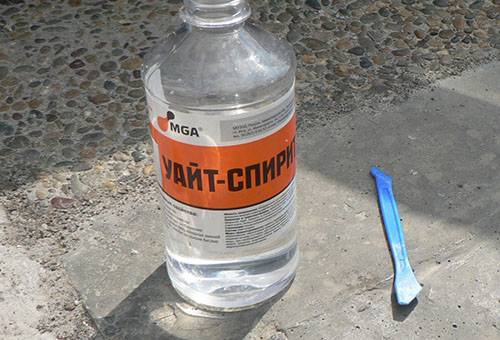
An overview of popular removal methods from various surfaces
The sealant, getting on the surface, quickly hardens, it is difficult to remove it using conventional means.
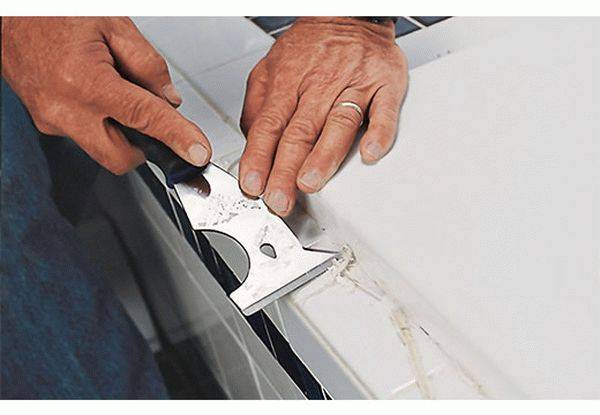
Mechanical
pry the material with a knife or other sharp object, gently pull;
wipe off the silicone with a metal scraper, a spatula by scraping. The main part of the contamination is removed with a sharp object, then the surface is cleaned with a layer of sandpaper;
the mechanical method is well suited for floor coverings (laminate) .. The methods given are suitable for dark surfaces with increased resistance, otherwise the stain can be removed together with paint and acrylic
These methods are suitable for dark surfaces with increased resistance, otherwise you can remove the stain along with paint and acrylic.
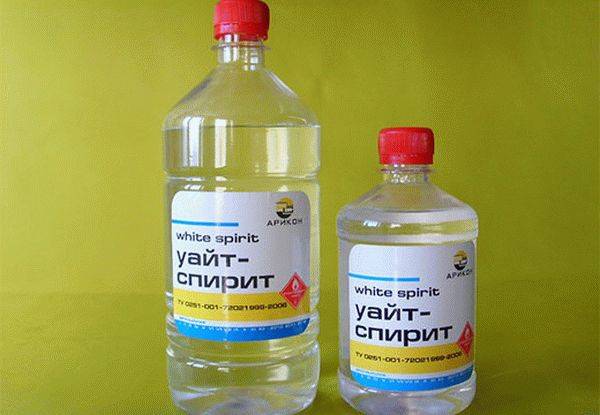
Chemical
When using chemicals on a thick layer of sealant, pre-treat the joints with a rag and remover.
There is another classification of silicones.
- plumbing - used to seal sanitary facilities: acrylic bathtub, shower stall;
- adhesive sealant - used in the manufacture of glass and glass ceramics: aquariums, stained-glass windows;
- silicones with antifungal additives - used in aquariums, swimming pools.
| Chemical name | Peculiarities |
| White Spirit | Consists of aliphatic and aromatic hydrocarbons. Apply on unpainted surfaces, otherwise the sealant will be removed along with the paint. |
| Penta-840 | A universal solvent for all storage conditions and ambient temperatures. Apply the substance to the required surface, wait for complete softening, rinse with plenty of water. |
| Antisil | Silicone degreaser. |
| Dow Corning OS-2 | Means for removing substances from pvc and acrylic surfaces. |
| Silicon-Entferner | Removes from enamel, metal, plastic surfaces. |
| Lugato Silber Shutz Silicon | In addition to removing it, it prevents the appearance of mold and mildew. |
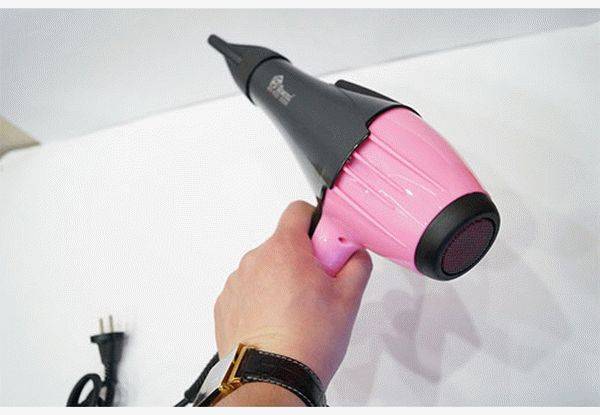
Household methods
fresh stains are removed with a cloth soaked in soapy water. You can clean the brush by soaking it in warm detergent;
the removal method depends on its composition. Neutral seals are made on the basis of alcohol, alkaline - based on alkali, acidic - using acetic acid. To remove, soak the sealant in the material it is based on;
consider the type of surface. It is forbidden to treat wooden kitchen surfaces (countertops) with acetone, white spirit, metal ones - with vinegar (to prevent corrosion);
to get rid of silicone on ceramics, first treat with a solvent, and after half an hour rub the stain;
the easiest way is to wipe old stains off the plastic. It is enough to soak the surface, after half an hour treat it with a solvent, then with a degreasing solution
Use acetone with caution for plastic, there is a possibility of its softening;
removed from metal mechanically (use a knife or scissors);
it is easy to wipe off traces of silicone sealant from glass if you preheat it;
if the sealant needs to be removed from the tile in the bathroom, pick it up with a sharp object and evenly, without sudden movements, remove the substance around the entire perimeter of the tile. If you are afraid of scratching the tiles with a sharp object, use a wooden scraper
Degrease the surface first before applying new sealant;
Wrap the salt in cheesecloth and process any type of silicone;
heat the necessary element with a hairdryer, the silicone will fall off on its own from the high temperature.
What can be cleaned
The silicone sealant is specially made so that it cannot be washed off or accidentally torn off, otherwise it would not perform its functions.
Therefore, more than one method and tool may be needed to clean up residues of the product or to remove old sealant.
To uninstall, you need the following tools:
- stationery or shoe knife;
- pumice;
- salt;
- acetic acid;
- White Spirit;
- ethanol;
- detergent for windows.
Of course, the entire list is not needed for one cleanup. Different items will be used for different methods. And there are 2 of them: chemical and mechanical.
The chemical method involves the use of solvents to soften the silicone. Mechanical requires cutting, scrubbing and washing.
Let's consider the most common places where the sealant can accidentally get into or need to be replaced:
- bath;
- clothes;
- tile;
- glass.
Mechanical way of cleaning tiles
Mechanical scrubbing of the sealant is not particularly difficult, but it may take a certain amount of time. Some tools will be needed:
- sandpaper;
- stationery knife;
- wooden or metal spatulas;
- razor blade;
- metal brush;
- scraper;
- rags.
This method is suitable for preparing surfaces for other cleaning methods.
To avoid contamination during operation, it is better to remove traces of the sealant with a damp cloth immediately after they hit the surface. It is recommended to use masking tape to process the joints, this will avoid smudges.
If the silicone layer is large enough, thick enough, a sharp object is enough to cut it off the coating. This is a simple and straightforward method for removing sealant from tiles. There are many options for tools that can be used for this.
Here are the main ones:
Scraper. Plastic / wooden, suitable for a kitchen (designed for a frying pan). The glass scraper will come off. Wire sponge. Option - a wire sponge for dishes. Knife
The sharper the better, but the greater the likelihood of surface damage, it is critical to approach very carefully. Many people prefer to take an ordinary clerical knife, as it is especially sharp, but not too "scratching"
Another option is a razor, or rather a blade. Here you need to be very careful, wrap the razor with a cloth so as not to cut yourself on its edge. Dry burlap rags - after you wash / wipe off the sealant from the tile, wipe off the rest. Eraser. A brush designed to sweep away silicone residues.
To avoid the question of how to wash the silicone, it is recommended to paste over the surface with masking tape before starting work, protecting it from this agent. If contamination could not be avoided, you will need to clean:
Sharp knife. As a rule, it is he who is used first before proceeding with further scrubbing of the sealant. The tool is simply scraped off the top layer
In this case, you need to be very careful not to scratch the coating or spoil its appearance. This method is more suitable for surfaces that are resistant to mechanical damage or in inconspicuous places.
Scraper. This is a special tool for glass surfaces. It has the shape of a spatula, but its base is slightly thicker and has a pointed end, reminiscent of a kitchen knife. If there is no such device on the farm, then you can replace it with an ordinary spatula. Scraper made of wood or plastic. Surely professional builders have this special tool. If this is not available, a scraper for cleaning the pan from carbon deposits can replace it. A wire scrubber is useful for cleaning the joints between the bathroom and the tile. At the same time, the work is performed very carefully so that scratches do not appear on the surface.
Transparent silicone sealant has one drawback - it can be difficult to notice. Only after some time can it be detected when the composition becomes slightly cloudy.
Many craftsmen had to deal with this phenomenon and mechanically wipe off the silicone sealant from the tiles. For this method, we may need the following tool:
- Small spatula.
- A scraper with a sharp blade.
- Construction or office knife.
- Razor blade.
- Eraser.
If you find at least one of these tools, you can try scraping off the sealant.
In order not to clean the excess and not expose the seam, it is recommended to cut the line with a knife, separating the desired silicone. If this is not done, then during stripping, you can damage the desired area, remember that silicone is strong and stretches well.
You need to clean up layer by layer until the scraper touches the surface of the bathtub or tile. That's not all, because the sealant will remain small dots that can be scraped off with a pencil eraser or a piece of burlap.
Silicone sealant - how to seal the joint between the bathtub and the wall?
If you cannot remove the silicone with the help of prolonged mechanical action, then do not bother, otherwise you can make a lot of scratches and completely ruin your mood. There are several other ways to remove silicone sealant from tiles.
Methods and means of removing sealant
The most relevant means and the safest for removing the sealant are:
-
vinegar. Many, in order to remove the sealant, choose vinegar, but not in pure form, but its 3% solution diluted in ordinary water. After the contaminated area has been treated, be sure to wash it under running water. It is imperative to use only a 3% solution, since the use of a higher concentration can cause burns;
- Degreasing products based on acetone, solvent, white spirit. Due to the almost instantaneous properties of these substances, silicone on the skin can be removed without difficulty. The use of ordinary ethyl alcohol is considered no less effective. If the sealant gets on the skin of the hands, it is advisable to immediately treat the skin area with any of the described means using moistened cotton wool. After the procedure, you must thoroughly wash your hands with soap and running water.
- Polyethylene film. You can also remove a product such as silicone from the skin with the help of ordinary plastic wrap. A simple package that any housewife can find is also suitable. It is enough just to rub the soiled place with a bag, and the silicone will come off. For the final cleansing of the remaining particles of the sealant, you need to hold your hands in hot water and wash them with laundry soap.
All of these methods are generally available and safe to use. Nevertheless, when using them, negative consequences are possible, depending on the individual indicators of the organism. In this case, it is worth using some tips.
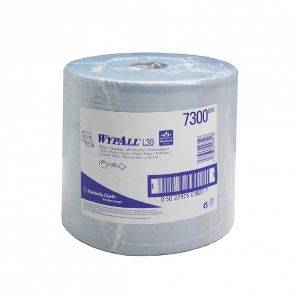
- To alleviate the problem, it is advisable to visit any construction department where you can purchase specialized wipes for removing sealants.
- You can wipe off the product (subject to an instant response) by holding your hands in hot water and using a pumice stone to remove.
- As an effective method, you can use vegetable oil, preheated to a temperature of 50 degrees. Then, again, wash off the traces.
- Under working conditions with a sealant, you can rub your hands with ordinary dishwashing detergent or simple soap suds. Slippery applied composition can prevent silicone from adhering to the skin.
Sealants should be used exclusively by familiar manufacturers who have proven themselves on the positive side.
The purchase of cheap analogs can cause significant damage due to the fact that unscrupulous manufacturers replace active substances that do not correspond to those stated on the package.
Whatever means you have to remove silicone or other sealant, you should definitely use a moisturizer after the procedure. This will help restore the skin and avoid irritation.
Also, before starting repairs, it is worth thinking about rubber gloves, mainly surgical ones. They are quite convenient and, most importantly, relevant. In this case, the thought itself will not arise how to wash off the sealant from the hands, and, accordingly, the fact of a threat to health is excluded.
How to remove silicone sealant from clothing?
Any silicone on clothing should be removed as soon as possible. Most of the dirt is removed mechanically, then a soft cloth is moistened with vinegar and rubbed over the stain. Everything must be done quickly to prevent complete polymerization. After all this, greasy stains may remain on the fabric, but they are easy to wash off.
Interesting!
Greasy sealant stains can be removed with chopped table salt. It is poured onto a cloth, moistened with water and rubbed into the stain in a circular motion.
If the sealant is frozen on your clothing, it will be difficult to remove, although there are some fairly effective methods.
- The top layer, convex, is removed by hand. It usually comes off easily, but if that fails, you can pull on the fabric.
- Now you need to soak the contaminated area with table vinegar. Vinegar should not be spared, it must completely penetrate the fabric so that the dirt can soften. Impregnation usually takes up to 30 minutes.
- The last step is washing the speck with soapy water or powder. During washing, both the vinegar-impregnated sealant itself and the greasy stain from the clothes that remain after it are removed.
If the vinegar doesn't work, you can use solvents. But only those are taken that are suitable for fabrics.
Chemical disposal methods
After completing the work, there are often traces of silicone, its surplus or drops. How to wash off silicone sealant? One of the known mechanical methods for removing silicone sealant is white spirit. This tool removes silicone easily, but has some drawbacks. These include cases when the treatment area is painted with paint that white spirit can dissolve. This procedure may erase paint from the surface to be removed from the sealant.
They also use special tools to remove silicone sealants. They can be purchased at the same stores where the sealant itself is sold. Consideration should be given to the dryness of the substance, the age of solidification, the volume of the treated area. It may be necessary to leave the surface for a while after applying the substance for better interaction, and then clean the surface.
Simple household methods include cleaning the sealant with a knife or spatula. This rough method requires the utmost care so as not to damage the removal surface. Before hardening, the silicone can be easily removed with a damp cloth. Therefore, when working, put it next to you, so as not to resort to more complicated methods of removal in the future.
Often vinegar or mineral spirits are included in the sealant. Take the packaging, carefully read the composition. If it contains one of these components, then they should clean the surface. Apply, for example, vinegar to the treatment area, wait for interaction, then remove the softened structure with a damp cloth.
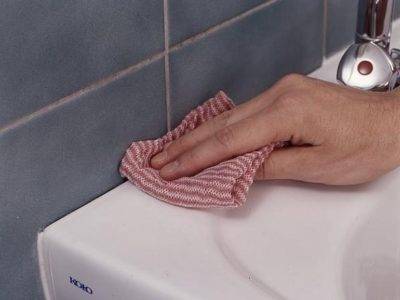
Cleaning clothes
If surfaces in a bathroom or other room require the use of aggressive agents (chemicals, abrasives), then simpler methods are used to remove the stain from the woven material:
- Fresh silicone can be removed by stretching the fabric. The slightly hardened substance will remain to pick up with something hard and the sealant will completely come off.
- A wardrobe item can be cleaned by placing it in the freezer for several hours. The silicone is easily removable. The same principle is used to remove chewing gum from clothing.
- A complex stain (cured sealant) can be cleaned by soaking in concentrated acetic acid (70%). The soiled thing is left in acid for a while, then the sealant is removed with a sponge or rag.
- Ethyl alcohol has a destructive effect on the silicone-containing composition. In this substance, rags are moistened and the contaminated area is treated, almost immediately the structure of the sealant begins to collapse and you can proceed to the second stage - cleaning with a brush. The silicone will gradually roll into lumps. As a result, the fibers of the material will be completely cleaned.


